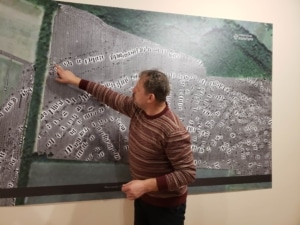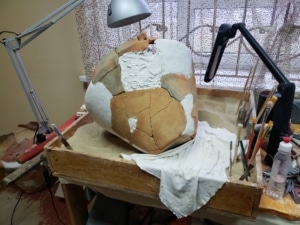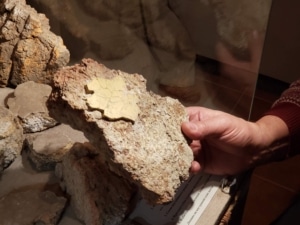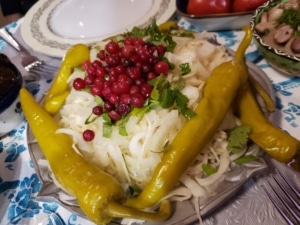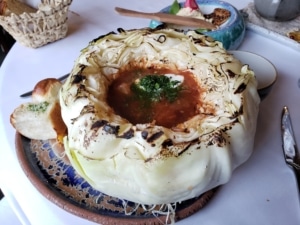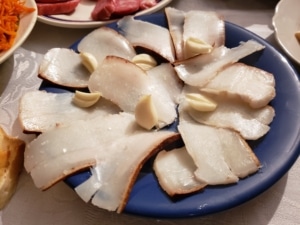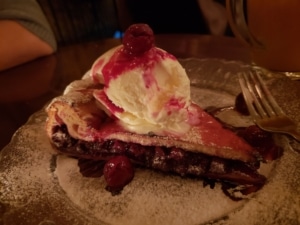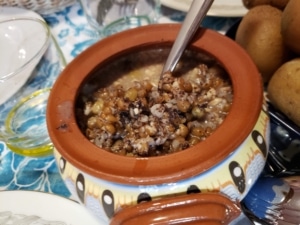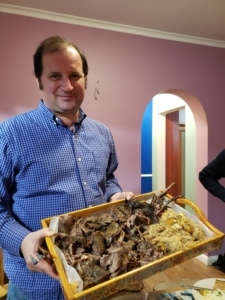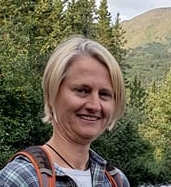I have admittedly not spent enough time in Ukraine, in part because our partners at NovaMova are so efficient and responsive with students, and because we see them regularly at conferences here in the US.
I decided to change that and spend some quality time there in early January, getting to know Kyiv better and as is usually the case with site visits, generating program ideas. A fundamental aspect of our programming is about how a location really supports the core topic through experiential learning and other opportunities outside the classroom.
I will keep my review fairly short as a couple of my colleagues will be visiting soon and I’d like them to share their impressions more extensively from a “first time” perspective, which is more relevant to the experience most students would have as “first timers.” It is too easy for me to say I enjoyed my stay as of course I love spending time with our partners there and was treated to the wonders of the Ukrainian kitchen.
Instead I will focus on a unique opportunity I had to visit an area a couple hours south of Kyiv, which has me thinking already about a new program – either for individual students, or for faculty-led consideration.
We traveled to the village of Legedzine, not far from Uman in Cherkasy region. Because of a lack of snow cover I was able to see along the way what is meant by “black soil” and why life here is tied to the land. Uman itself is very well known as a pilgrimage site for Breslov Hasidic Jews. Legedzine is home to a wonderful, if small, Trypillian Culture State Historical and Cultural Reserve. The Cucuteni-Trypillian culture spanned Romania and Ukraine from about 5500-2750 BC. It is most noted for the fact that it burned its settlements each time it moved, approximately every 50-70 years, likely due to thin topsoil at the time. Burning of the clay houses, however, left behind magnetic residue, allowing for very accurate mapping of settlements, which are surprising in their size. Villages were anywhere from 10,000 people and up, which is very substantial for that time.
We had a wonderful tour of the museum, led by the director. It was remarkably informative, not only about the Trypillian culture, but also a generally fascinating glimpse at the field of archaeology itself. The director explained how we know what we know very well. The museum also acts as a cultural center for the village itself, and that same evening was host to a fun traditional dancing class.
https://www.youtube.com/watch?v=JDc-kMzwN20
The village has also become associated with the American artist Naomi Uman, who bought a house in Legedzine and then created a series of films there. This was a century after her great-grandparents emigrated from Uman and it seems her family adopted the city name as their last name after immigration officials mixed up their last name and place of origin at the border… The village itself has become active with film production and we were lucky enough to watch one of these films, The Black Cossack, in which all actors but one were amateurs from the village.
That evening, which was also just wrapping up the holiday season, we enjoyed a party at the home of Yura Rafalui, a local artist and musician. It was truly a cultural experience, with hours of traditional village song.
https://www.youtube.com/watch?v=objA-cDPBXY
It is difficult to summarize an intensive two-day experience like this in any concise way. It is something that puts history in perspective, whether it is the unearthing and interpretation of Trypillian culture, or the realization that the tradition of village singing could disappear by the next generation. I will do my best here with some images. I realized that there is a way to relay this all to students in a very experiential way. All the infrastructure is here to study the history and culture from multiple perspectives. There are opportunities to join the digs in the area, practice recording traditional music, explore Jewish history, WWII history, the Soviet period, and now independence.
One of the immediate results of my visit was a decision to incorporate Ukrainian language study into all our regular programming in Kyiv. While Kyiv is still very much Russian speaking, the street signs are in Ukrainian now and I noted that in most cases I was greeted initially in Ukrainian in a restaurant or shop. And once outside of Kyiv, you find that Ukrainian starts to become dominant. In Legedzine, this was the case. My Russian is at a level where I felt I could more-or-less follow a conversation in Ukrainian, which is indeed similar but with many marked differences. I felt myself desperately wanting at least a tutorial, of both basic common words and expressions, but also an overview how exactly Russian and Ukrainian differ. I believe we can not only enhance the general experience that students will have in modern Kyiv and Ukraine with a basic language introduction like this, but there are some additional lessons to be learned about living in a bilingual society and the relationships between Slavic languages.
We are starting to build in these changes already. Although more development will come, you can see our revised Kyiv program pages here.
My thanks again to our partners at NovaMova for such a wonderful experience in their country. They truly understand the experiential side of education and I believe it is one of the main drivers of incredible co-produced programs we have developed there and the stellar feedback we receive from our students in Ukraine.


